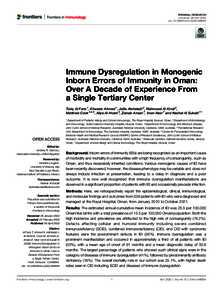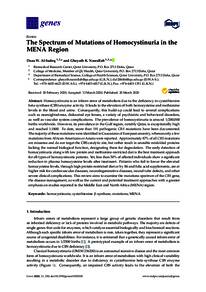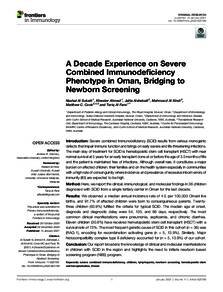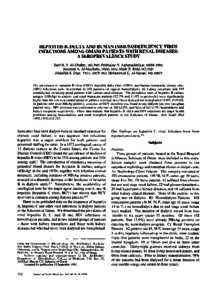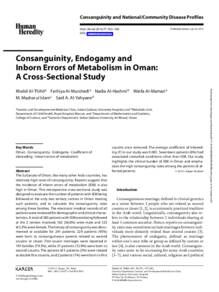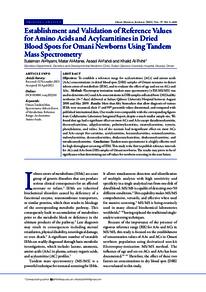Document
Immune dysregulation in monogenic Inborn errors of immunity in Oman : over a decade of experience from a single tertiary center.
Identifier
DOI: 10.3389/fimmu.2022.849694
Source
Frontiers in Immunology. v. 13, 849694
Contributors
Ahmed, Khwater., Author
Al-Shekailiyah, Jalila., Author
Al-Kindi, Mahmood., Author
Cook, Matthew., Author
Al-Hosniyah, Aliya., Author
Ansari, Zainab., Author
Nasr, Iman., Author
Al-Sukaiti, Nashat., Author
Country
United Kingdom.
Publisher
Frontiers Media S.A.
Gregorian
2022-04-06
Language
English
English abstract
Background: Inborn errors of immunity (IEIs) are being recognized as an important cause of morbidity and mortality in communities with a high frequency of consanguinity, such as Oman, and thus recessively inherited conditions. Various monogenic causes of IEI have been recently discovered; however, the disease phenotype may be variable and does not always include infection at presentation, leading to a delay in diagnosis and a poor outcome. It is now well recognized that immune dysregulation manifestations are observed in a significant proportion of patients with IEI and occasionally precede infection. Methods: Here, we retrospectively report the epidemiological, clinical, immunological, and molecular findings and outcomes from 239 patients with IEI who were diagnosed and managed at the Royal Hospital, Oman, from January 2010 to October 2021. Results: The estimated annual cumulative mean incidence of IEI was 25.5 per 100,000 Omani live births with a total prevalence of 15.5 per 100,000 Omani population. Both the high incidence and prevalence are attributed to the high rate of consanguinity (78.2%). Defects affecting cellular and humoral immunity including severe combined immunodeficiency (SCID), combined immunodeficiency (CID), and CID with syndromic features were the predominant defects in IEI (36%). Immune dysregulation was a prominent manifestation and occurred in approximately a third of all patients with IEI (32%), with a mean age of onset of 81 months and a mean diagnostic delay of 50.8 months. The largest percentage of patients who showed such clinical signs were in the category of diseases of immune dysregulation (41%), followed by predominantly antibody deficiency (18%). The overall mortality rate in our cohort was 25.1%, with higher death rates seen in CID including SCID and diseases of immune dysregulation. Conclusion: Immune dysregulation is a frequent manifestation of Omani patients with IEI. Early detection through raising awareness of signs of IEI including those of immune dysregulation and implementation of newborn screening programs will result in early intervention and improved overall outcome.
ISSN
1664-3224
Resource URL
Category
Journal articles

